I’m remodeling a small victorian. Want to save the door and woodwork around it. However, door jam where the hinges are screwed into is deterioriated – split wood, screw holes no good anymore. Have tried epoxy, dowels and glue in holes – nothing holds the screws. Any suggestions? Do I have to take the whole jam apart and rebuild with new wood?
Discussion Forum
Discussion Forum
Up Next
Video Shorts
Featured Story

Michael Hindle explores the efficacy of deep energy retrofits and discusses essential considerations for effective climate mitigation.
Featured Video
How to Install Exterior Window TrimHighlights
"I have learned so much thanks to the searchable articles on the FHB website. I can confidently say that I expect to be a life-long subscriber." - M.K.
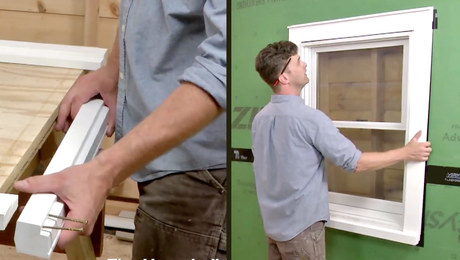
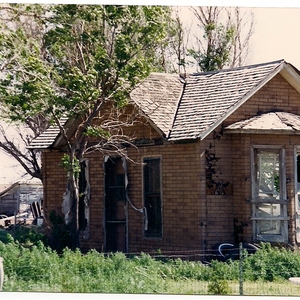






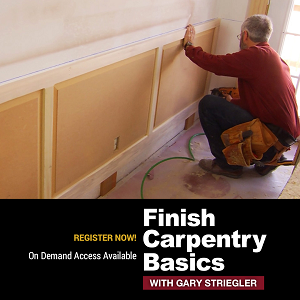


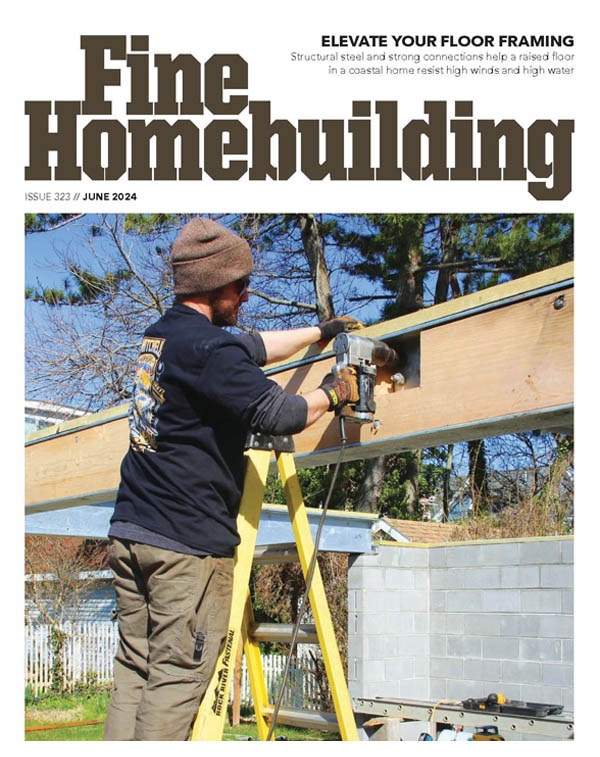

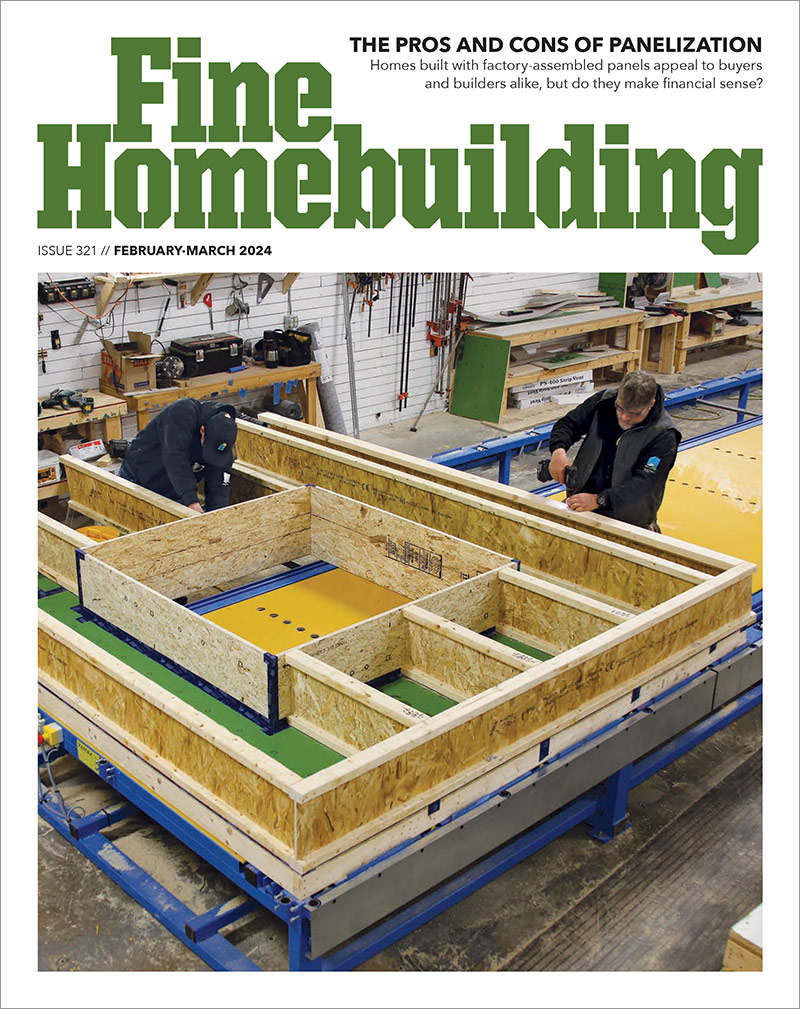
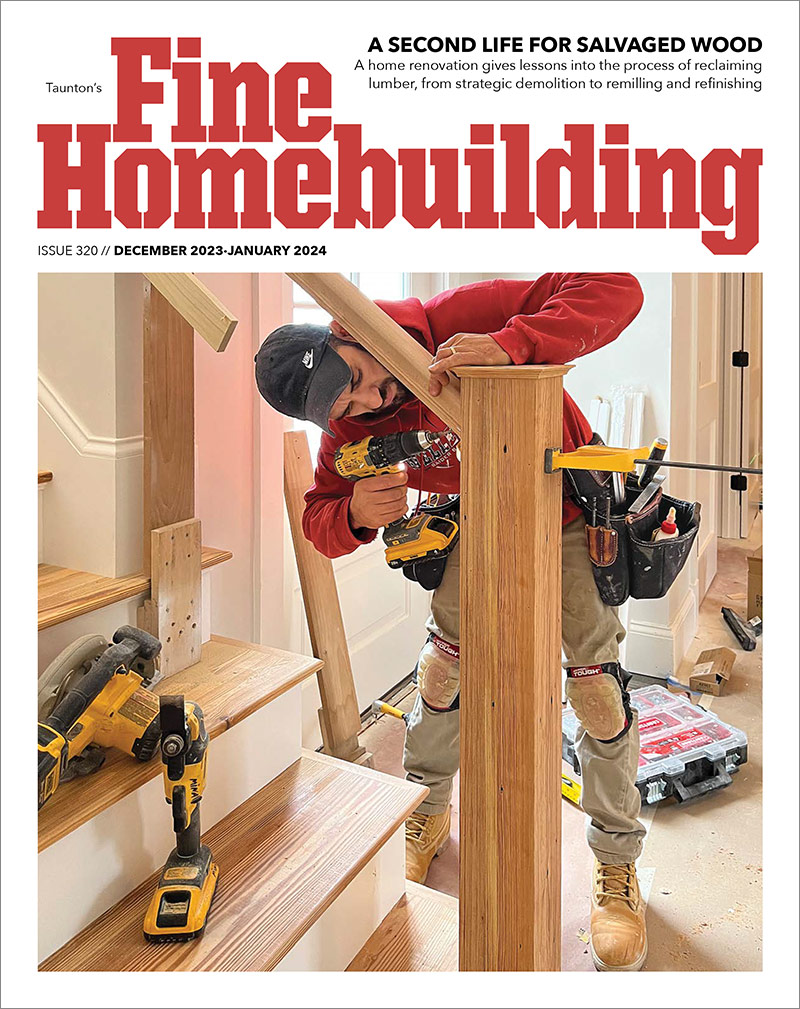


Replies
<<Have tried epoxy, dowels and glue in holes - nothing holds the screws>>
I'd say you've exhausted your options....time to rebuild.
Justin Fink - FHB Editorial
Move the hinges, and use long screws that will reach to the studs.
"When asked if you can do something, tell'em "Why certainly I can", then get busy and find a way to do it." T. Roosevelt
try a longer screw. one that penetrates into the rough jamb. however, the finish door jamb needs to have enough integrity to at least keep the screws straight (no wobble).
Here's an idea that worked for me:
Drill out a 3/4" hole and glue in a short section of dowel. Make sure the dowel fits snugly. Once the glue dries, you'll have virgin wood to work with. The dowel will be hidden by the hinge so you won't even have any cosmetic issues.
-Don
Edit: And if that doesn't work, and you can't reach the stud with a long screw, you might be able to pull the casing and slip a piece of wook behind the jamb for the screw to catch.
Edited 3/13/2006 5:58 pm ET by DonCanDo
Can you remove the hinge side casing?
If so, you can install some t-nuts into the back of the jamb, and use machine screws to hold the hinges.
I just thought of this -
Someone here some time ago said they use the threaded inserts. Drill a hole, run the inserts in, and, again with machine screws, bolt the hinge to the jamb.
Unless I'm misunderstanding your situation, how about dutchmen? This would be easier than a full rebuild, but would ensure you have solid wood. You don't mention if it's painted or stained. Painted is a lot easier to hide the patch...
I'm new to this situation, what do you mean by "dutchmen"?
I'm just wondering aloud about the dowels, many people will stop at a very small dowel driven into the screw-hole - does that capture the situation ?
Actually Torn is on the right path, using a dutchman (routing out a large section of wood and inserting a piece of solid wood in its place). But there are compromises too, most involve a combination of the solutions already presented. Here's where I might go on this:
My suggestion is to drill quite large holes through the jamb where the screws once were (like 1", you'll have to judge by the space you have; use wood stabilizer to harden up the surrounding wood; put in large dowels that go right back to the frame; use the long screws (as others have mentioned) that will reach right through to the frame and make it one continuous unit.
Phill Giles
The Unionville Woodwright
Unionville, Ontario
Thanks Phill for your reply. The dowels were on the small side. We have not tried drilling out that large an area yet. So, we'll experiment with that next.
The problem with dowel is that you get end grain -- not good for holding screws. Also, dowels are usually made of maple or something similarly hard that doesn't take screws very well.
If ignorance is bliss why aren't more people
happy?
Use the long screws. If that isn't enough, rebuild/replace the jamb.
If you do rebuild/replace the jamb, you can double-up the wood behind the hinges, or install metal T-Nut inserts to hold the screws. But you still need some screws through the jamb and into the stud, to hold the jamb vertical against the weight of the door.
happy?